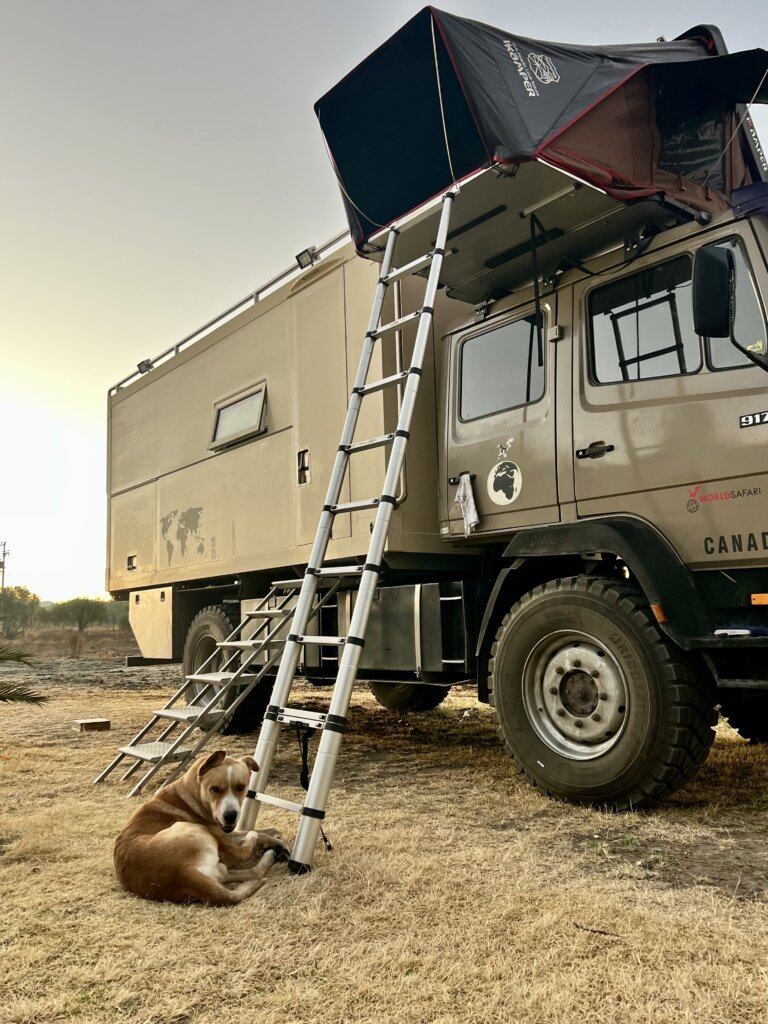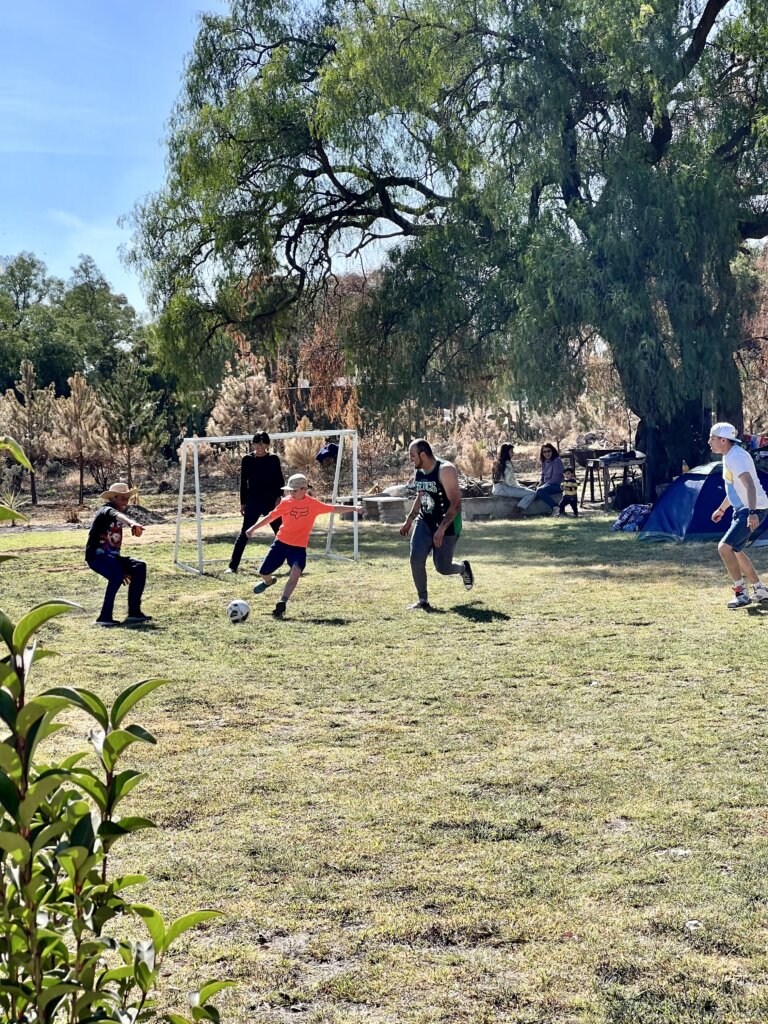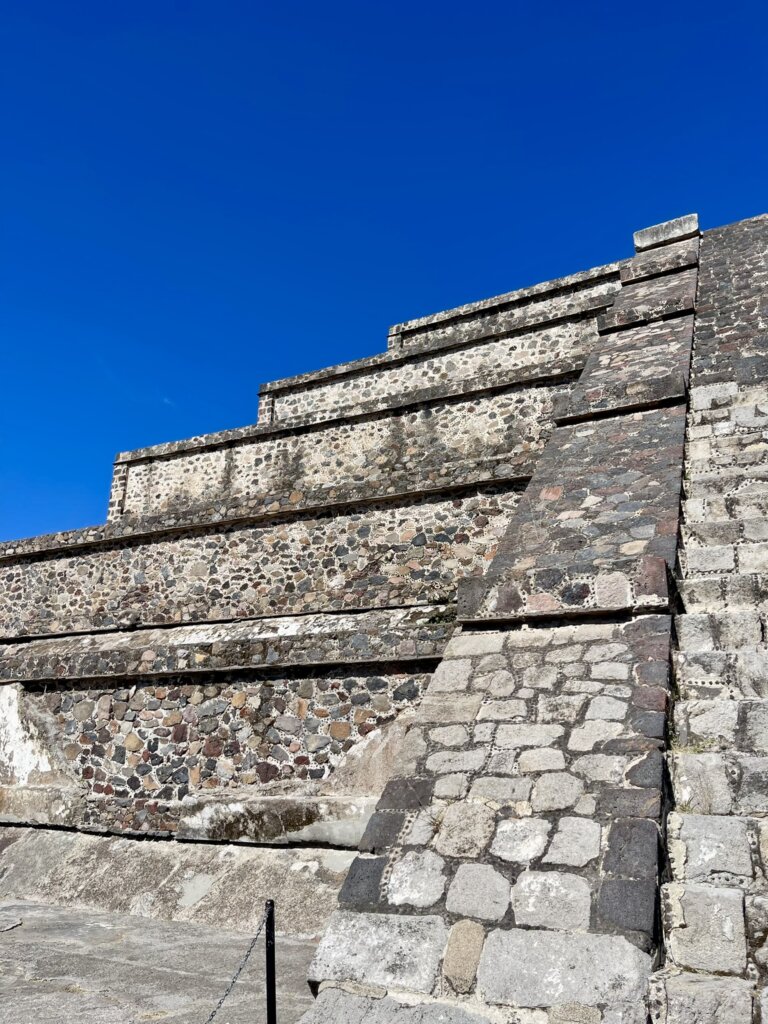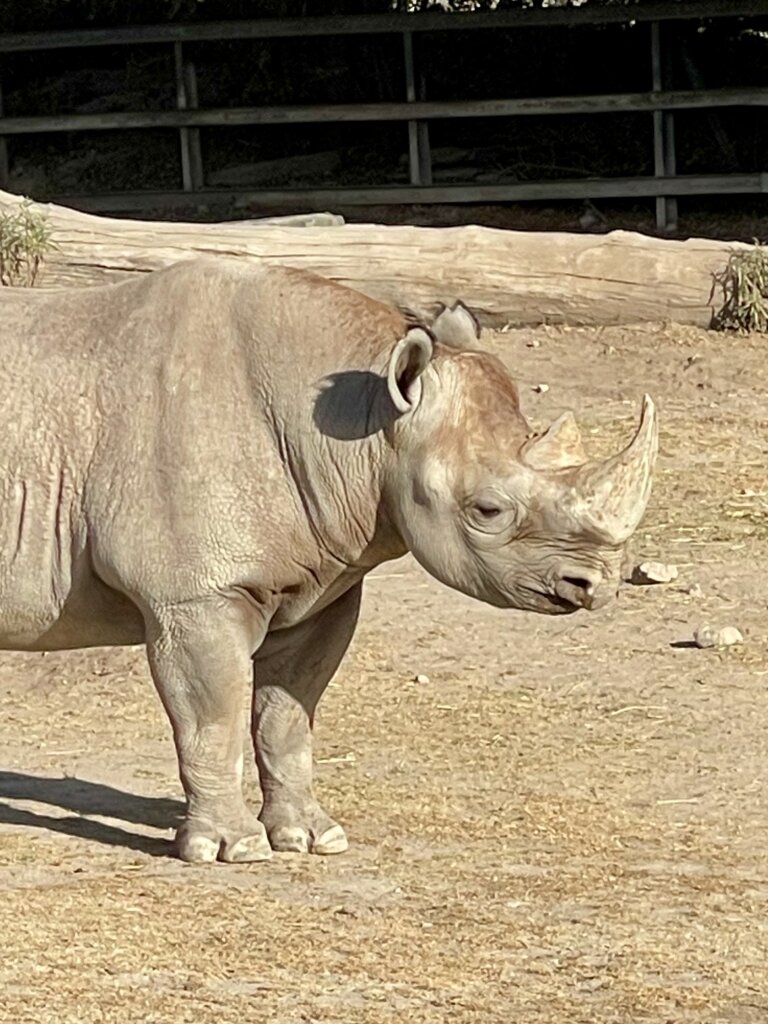December 12th – 17th
If there’s one thing we hate, it’s backtracking—up and down that same stretch of highway, burning diesel, time, and money. But for the last time, we’ve decided to turn back and keep heading south.
After getting Frank’s email yesterday, we learned the parts would likely take 3–4 weeks to arrive in the U.S., depending on availability. That’s too long. One week would be fine, but a month? No way. So, we figured we might as well keep moving in the right direction—South.
This detour cost us two days, 700km, and a few hundred dollars in diesel, but time rolls on. We opted for the toll road around Querétaro and pulled into a PEMEX gas station just after dark. We found a quiet corner and passed an uninterrupted (but noisy) night.
The following morning, we rolled out early, making our way to the Arco-Norte to avoid Mexico City’s inner ring road. The city has “no-drive” days based on license plates, and hefty fines await anyone caught driving on the wrong day. Hooking around and down to Teotihuacan, we headed to a familiar campground from our last trip.
Omar, the owner, recognized our truck and welcomed us back. We spent three days here unwinding from the drive, doing laundry, tackling schoolwork, and relaxing.
Jaxon joined in on a soccer game with some people from Mexico City who were staying here.
Oh, and this is Rita the donkey. Omar rescued her from an abusive owner who worked her to near death. She’s 11yrs old, so is enjoying a more easy going life giving the occasional ride to visitors.
Amber is the male Pit Bull cross keeping guard over Charley, curled up at the bottom of the ladder, he didn’t move all night, What a good boy! The trampoline was newer and in great condition, perfect for pulling a few backflips!





teoithuacan Pyramids
The Pyramids of Teotihuacan are immense and predate the Aztec Empire by over a thousand years. Thriving alongside many Mayan cities and, at their height (250–500 CE), the site was one of the largest cities in the world, with a population of 125,000–200,000. Today, it’s a popular destination, with guided tours offered in multiple languages.
Sunday afternoon, we walked 8 km round-trip to re-explore the pyramids. On our last visit, climbing the pyramids was allowed, but that’s no longer the case—probably for the best in terms of preservation. Trinket sellers nearly outnumbered visitors. Information boards were so faded they couldn’t be read, and unsightly orange plastic fencing was haphazardly rolled out to block off areas. I wish I could say it was beautifully preserved with expert care and an open budget, but that wasn’t the case. Still, we enjoyed it, learned what we could and snapped some photos before heading back. On the way back, the smell of freshly baked sweet bread lured us in to a local panaderia / bakery for a well-deserved treat.









DECEMBER 16TH
Before pulling out of El Rancho RV this morning, we had a quick video chat with Charley’s orthodontist back home. She is pleased with the progress, so we’ll check back in March.
We’ve grown to appreciate the ease of toll roads over the free ones. Though expensive, the lack of topes (speed bumps) and the faster pace make it worth it. Right now we’re heading South of Puebla to a wildlife park highly recommended by other travellers.
AFRICAM SAFARI
We arrived at the gates mid afternoon, uncertain if we’d be allowed in given our truck’s size. After chatting with a friendly ranger and waiting on a couple of phone calls, we got the thumbs up. For $100 CAD, we entered and spent the rest of the day completely enthralled by this open-air safari.
Established in 1972, the park houses 2,500 animals of 350 species, roaming freely in environments that mimic their natural habitats—albeit on a much smaller scale. Predators like lions are, of course, separated from prey like zebras and elephants.
The park is well-designed, though I wish the animals had more space and the tourist facilities were smaller. Still, our tourist dollars help keep it running. The animals appeared well cared for, but the solitary black panther stood out. In his small enclosure, he seemed to me to show signs of boredom, frustration, and loneliness. (We jokingly offered the kids to him for entertainment, but he wasn’t interested!)
We stayed until closing, seeing 95% of the park. The parrot enclosure was closed, though we could hear the birds squawking loudly. The Australian section had an aviary filled with playful budgies and emus roaming fearlessly among the visitors.










We asked a security guard if we could camp outside the gates for the night. He said it wasn’t allowed but directed us to a lakeside spot in a nearby village.
The gated community required ID for entry, so I handed over a photocopy of Tim’s expired international driver’s license. The gatekeeper took a photo and let us in. The area was tidy and upper-middle-class, a stark contrast to the town we’d driven through to get here.
By the lake, the air smelled of sulfur, and there was some litter on the ground. We leveled the truck and settled in. It was eerily quiet—no cars, no dogs, no people.
Around midnight, I was slowly & reluctantly, pulled from deep sleep by flashing lights and a low siren. Charley later said the officers had walked around the truck for about 20 minutes but never knocked. Eventually, they left, and we went back to sleep.
ONWARD TO OAXACA CITY
We rolled out by 7 a.m., aiming for Oaxaca City. What should have been an easy four-hour drive turned into an all-day affair. Toll booth workers were on strike, shutting down the booths and causing massive traffic delays. After an hour in the lineup, we shut off the engine. I made lunch in the back while Tim and the kids worked on school assignments.
Once the booths reopened, we continued to El Rancho RV, a favourite among Overlander’s. As the gates closed behind us, the first face we saw was Victoria, a friend we’d met in Guatemala. She and her husband, Neil, had arrived just minutes before us. We caught up over cold beers, sharing stories of the road.

